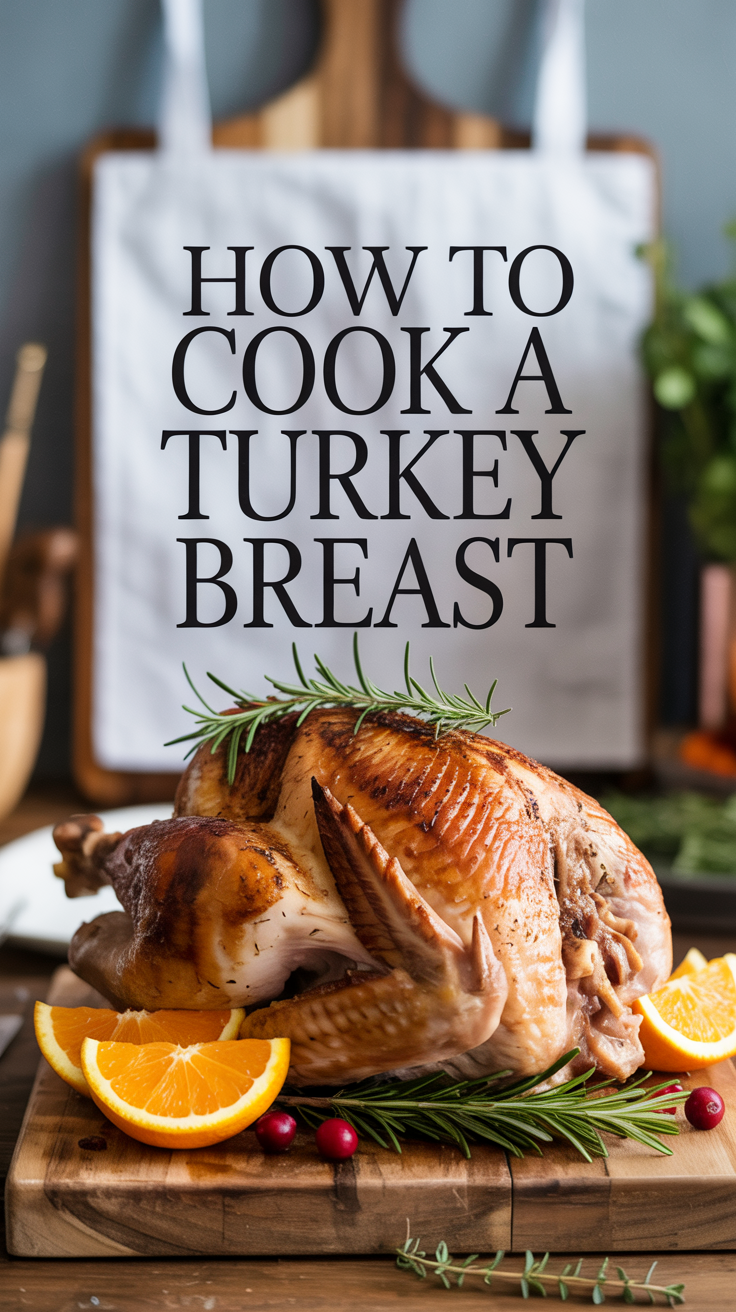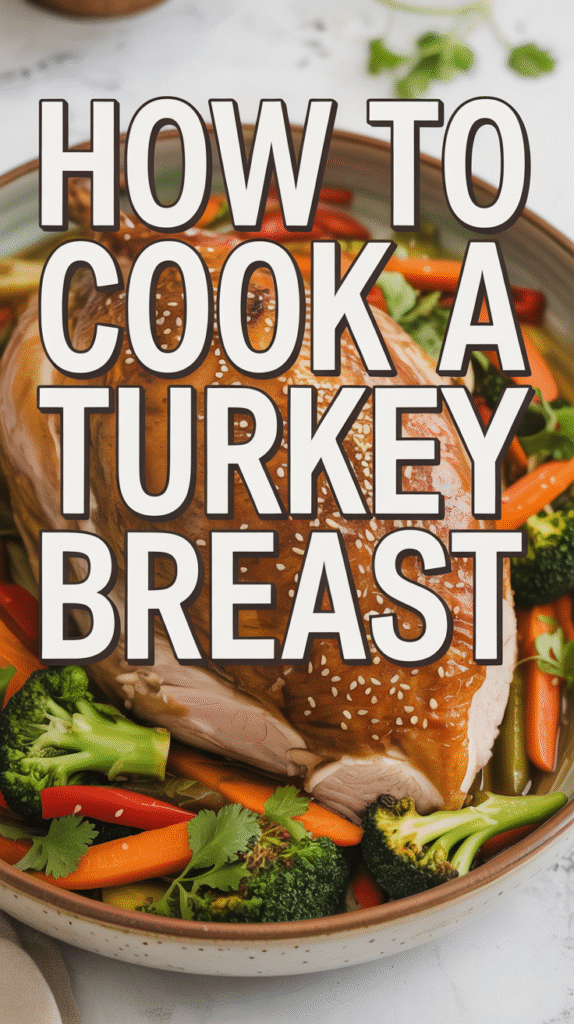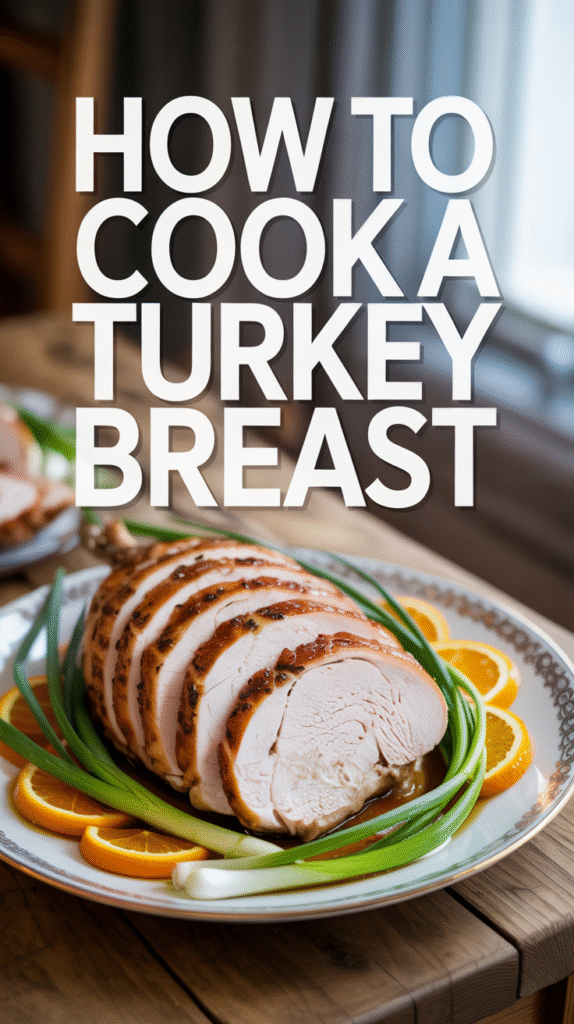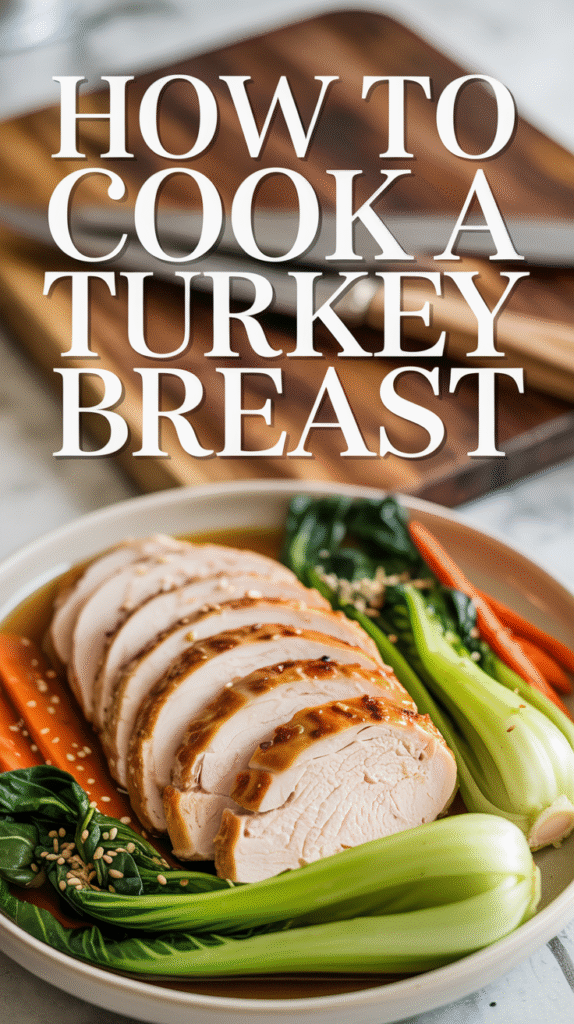Cooking a turkey breast is a rewarding endeavor that can yield delicious results for any occasion, whether it’s a holiday feast or a weeknight dinner. To master the art of cooking a turkey breast, there are several techniques and tips that can enhance the flavor and ensure perfectly juicy meat. Let’s explore these valuable insights.
Choosing the Right Turkey Breast
Start by selecting a fresh or frozen turkey breast. Here are a few tips for making the right choice:
- Size Matters: A 5 to 7-pound turkey breast is ideal for most families. Adjust based on the number of servings needed.
- Bone-in vs. Boneless: Bone-in turkey breasts tend to stay juicier during cooking. However, boneless breasts are easier to carve.
- Organic vs. Conventional: Organic turkey might be more expensive but often comes with richer flavor and better health benefits.
Preparation Steps
Once you’ve chosen your turkey breast, follow these preparation steps to set the stage for a successful cooking experience:
- Thawing: If using a frozen turkey breast, thaw it in the refrigerator for about 24 hours for every 4 to 5 pounds.
- Brining: Consider brining your turkey breast in a saltwater solution for at least 4 hours, or overnight. This process enhances the moisture and flavor.
- Seasoning: After brining, pat the turkey dry and rub it with your favorite seasonings. Common options include garlic powder, onion powder, thyme, and black pepper.
Cooking Techniques
There are various methods to cook a turkey breast, each yielding different results. Here are three popular techniques:
Roasting
Roasting is a traditional method that delivers crisp skin and juicy meat. Preheat your oven to 325°F (163°C) and place the turkey breast in a roasting pan. Use these guidelines:
- Cooking time is roughly 20 minutes per pound.
- Use a meat thermometer to check that the internal temperature reaches 165°F (74°C).
- Baste the turkey with its own juices or melted butter every 30 minutes for added moisture.
Grilling
Grilling adds a unique flavor that can make your turkey breast stand out. Here’s how to grill it:
- Preheat your grill to medium heat.
- Place the turkey breast skin-side up on the grill grates.
- Cover the grill and cook until the internal temperature reaches 165°F (74°C), which should take about 1.5 to 2 hours.
Slow Cooking
For a hands-off approach, consider using a slow cooker. This method allows for deep flavors to develop:
- Season the turkey and place it in the slow cooker with some broth.
- Cook on low for 6 to 8 hours or until the meat is tender and easy to shred.
Serving Your Turkey Breast
After cooking, let the turkey breast rest for at least 15 minutes before slicing. This allows the juices to redistribute, resulting in a juicy final product. Here are some serving ideas:
- Serve with classic sides like mashed potatoes and green beans.
- Pair with a cranberry sauce or a homemade gravy for added flavor.
- Consider slicing and adding to a salad for a refreshing meal.
Storage Tips
Proper storage is key to enjoying leftovers. Follow these guidelines:
- Refrigerate leftovers within two hours of cooking.
- Store in an airtight container and consume within 3 to 4 days.
- For longer storage, freeze the turkey slices for up to 4 months.
Mastering how to cook a turkey breast can elevate your culinary skills. Whether you roast, grill, or slow cook, using these techniques and tips will help you achieve a delicious and memorable dish.
For more recipes and cooking tips, visit Food Network and Serious Eats.
Flavorful Marinades and Brines for Turkey Breast
Cooking a turkey breast is an art, and the right marinade or brine can transform a simple dish into a flavorful masterpiece. Whether you’re preparing for a holiday feast or just a weeknight dinner, using a marinade or brine can enhance moisture and taste, making your turkey breast memorable. Below are some delicious options for marinades and brines that will make your turkey breast shine.
Basic Marinade Ingredients
Before diving into specific recipes, it’s essential to understand what makes a great marinade. Generally, a marinade includes:
- Acid: This can be vinegar, citrus juice, or yogurt. It helps tenderize the meat.
- Oil: Olive oil or another oil keeps the turkey moist and helps the flavors to stick.
- Flavorings: Herbs, spices, garlic, onion, and other seasonings impart flavor.
- Sweetener: Honey, sugar, or maple syrup can add a touch of sweetness.
Flavorful Marinade Recipes
Here are a few marinade recipes to consider for your turkey breast. Each one is designed to infuse incredible flavors while keeping the meat juicy and tender.
1. Herb and Garlic Marinade
This marinade lets the natural flavors of the turkey shine while adding aromatic herbs.
- 1/4 cup olive oil
- 3 cloves garlic, minced
- 2 tablespoons fresh rosemary, chopped
- 2 tablespoons fresh thyme, chopped
- Juice of 1 lemon
- Salt and pepper to taste
Combine all ingredients and marinate the turkey breast for at least 4 hours, or overnight for the best flavor.
2. Sweet and Spicy Marinade
This marinade balances sweetness with a kick that pairs perfectly with turkey.
- 1/3 cup honey
- 1/4 cup soy sauce
- 2 tablespoons Dijon mustard
- 1 teaspoon cayenne pepper (adjust to taste)
- 2 cloves garlic, minced
Mix the ingredients and let the turkey breast soak in the marinade for 2-3 hours.
Brining for Extra Juiciness
Brining is another excellent technique that adds moisture and flavor to your turkey breast. Here’s a popular brine recipe:
Basic Turkey Brine
This classic brine uses simple ingredients to ensure a juicy turkey.
- 1 cup kosher salt
- 1/2 cup brown sugar
- 1 gallon water
- 1 tablespoon peppercorns
- 2-3 bay leaves
To prepare the brine, dissolve salt and sugar in a gallon of water. Add the peppercorns and bay leaves, then cool before submerging the turkey breast in it. Brine for 8-12 hours in the refrigerator.
Herb-Infused Brine
This brine adds an incredible depth of flavor with fresh herbs.
- 1/2 cup kosher salt
- 1/4 cup sugar
- 1 gallon water
- 1 tablespoon black peppercorns
- 1/4 cup fresh parsley
- 1/4 cup fresh thyme
- 2-3 cloves garlic, crushed
Combine and cool before brining. Brine the turkey breast for 8-12 hours for maximum flavor.
Tips for Best Results
For optimal flavor infusion when marinating or brining your turkey breast, keep in mind these helpful tips:
- Always marinate or brine in the refrigerator to keep the meat at a safe temperature.
- Use a non-metal container for brining and marinating, as metal can interact with the ingredients.
- Pat the turkey dry with paper towels before cooking to get a better sear.
- Let the turkey rest for a few minutes after cooking for juicier meat.
For more detailed insights and recipes, check out resources like Food Network and Serious Eats. Enjoy the process of flavoring and cooking your turkey breast, and watch as your family and friends savor every bite!
The Best Cooking Methods for a Juicy Turkey Breast
Cooking a turkey breast can seem intimidating, but with the right methods, you can achieve a juicy and flavorful result. Here are some of the best cooking methods to help you create a perfectly cooked turkey breast every time.
Roasting
Roasting is one of the most popular methods for cooking turkey breast. It allows the skin to get crispy while keeping the meat moist. Here’s how to roast a turkey breast:
- Preheat your oven: Set your oven to 325°F (165°C).
- Prepare the turkey breast: Remove any packaging and pat the turkey breast dry with paper towels. This helps the skin crisp up.
- Add seasoning: Season generously with salt, pepper, and your choice of herbs, such as rosemary and thyme. You may also want to rub softened butter or olive oil over the skin for added flavor.
- Roasting: Place the turkey breast in a roasting pan, breast side up. Roast in the preheated oven for about 20 minutes per pound, or until the internal temperature reaches 165°F (74°C).
- Resting: Let the turkey breast rest for at least 15-20 minutes before slicing. This resting period allows the juices to redistribute, keeping the meat juicy.
Grilling
Grilling adds a wonderful smoky flavor and can be a great alternative to traditional oven cooking. To grill a turkey breast:
- Prepare the grill: Preheat your gas or charcoal grill to medium-high heat.
- Brining (optional): Brining your turkey breast beforehand can add moisture. Combine water, salt, sugar, and herbs in a large container, and submerge the turkey for a few hours or overnight.
- Add seasoning: Just like with roasting, season the turkey breast well.
- Place on the grill: Use indirect heat by placing the turkey breast on one side of the grill while keeping the other side heat-free. Close the lid and cook until it reaches the proper internal temperature.
Sous Vide
Sous vide is a method that ensures precise temperature control, resulting in perfectly cooked turkey breast. Here’s how to use sous vide:
- Season the turkey breast: Season as desired, then vacuum seal it in a bag.
- Setup sous vide: Preheat your sous vide water bath to 145°F (63°C).
- Cooking: Submerge the bag in the water bath and cook for about 2-4 hours.
- Finish with searing: After cooking, remove from the bag, pat dry, and quickly sear in a hot pan for a crispy finish.
Slow Cooking
If you prefer a hands-off approach, slow cooking is a wonderfully easy way to prepare a turkey breast:
- Prepare ingredients: Season the turkey breast and place it in the slow cooker with any desired vegetables, stock, or herbs.
- Cook time: Cover and cook on low for 6-8 hours or on high for 4-5 hours, until tender and cooked to the proper temperature.
Tips for Juicy Turkey Breast
- Avoid overcooking, as it leads to dry meat. Always check the internal temperature with a meat thermometer.
- Use a marinade or brine to help retain moisture during cooking.
- Rest the turkey after cooking for optimal juiciness.
For more detailed cooking techniques and recipes, you can visit Food Network or discover helpful resources at Serious Eats.
With these methods, your turkey breast will be succulent and inviting. Cooking can be simple and rewarding, allowing you to create a delicious meal for your family and friends.
Common Mistakes to Avoid When Cooking Turkey Breast
When it comes to cooking turkey breast, even the most experienced cooks can make mistakes that can turn a juicy feast into a dry disappointment. Understanding the common pitfalls can help you ensure a moist, flavorful turkey breast each time. Here are some key mistakes to avoid.
Not Brining the Turkey Breast
Brining is a crucial step that many people skip. By soaking the turkey breast in a saltwater solution, you enhance the flavor and ensure the meat remains juicy during cooking. A simple brine can be made with water, salt, and your preferred herbs and spices. Aim to brine your turkey breast for at least a few hours, or ideally, overnight.
Cooking at the Wrong Temperature
Cooking your turkey breast too high can result in a burnt exterior and undercooked interior. Conversely, cooking it too low can dry it out. The ideal cooking temperature for turkey breast is around 325°F (163°C). Use a meat thermometer to check for an internal temperature of 165°F (74°C) to ensure it’s fully cooked without becoming dry.
Ignoring the Importance of Resting
Once your turkey breast is done cooking, it’s essential to let it rest for at least 15 to 20 minutes before slicing. This allows the juices to redistribute throughout the meat, ensuring every bite is juicy and tender. Cutting too soon can result in a loss of moisture.
Overcooking the Meat
Overcooking your turkey breast is one of the most common mistakes. To avoid this, keep an eye on the cooking time. A general guideline is to cook the turkey breast for about 20 minutes per pound. That said, using a meat thermometer will give you the most accurate reading. Once it hits 165°F, take it out of the oven!
Not Using Enough Flavor
Turkey breast can be bland if not seasoned properly. Don’t be shy with your seasonings. Consider marinating the turkey breast or using a dry rub with herbs and spices like rosemary, thyme, garlic powder, or even a splash of lemon juice. Flavor enhancements can make a world of difference.
Skipping the Skin
The skin of the turkey breast plays a vital role in keeping the meat moist. If you’re cooking a skin-on breast, don’t peel it off before cooking. The fat from the skin helps baste the meat and adds flavor. That crisp skin also provides a delicious texture contrast to the tender meat beneath.
Choosing the Wrong Cooking Method
Different cooking methods yield different results. Roasting is common, but you might also consider grilling, smoking, or even slow cooking for varied flavors and textures. Each method requires careful adjustment of cooking times and temperatures, so be prepared for slight variations in results.
Not Using a Meat Thermometer
Relying solely on timing without a meat thermometer can lead to undercooking or overcooking your turkey breast. Investing in a good quality meat thermometer is a game changer. Ideally, it should be inserted into the thickest part of the breast, avoiding bones, for an accurate reading.
Failing to Carve Properly
The way you carve your turkey breast can affect the texture and juiciness of the meat. Always slice against the grain for the most tender pieces. Use a sharp knife for clean cuts and consider cutting it into thicker slices to preserve more moisture.
By avoiding these common mistakes, you’ll be on your way to cooking a perfect turkey breast every time. Remember, practice makes perfect, so don’t be discouraged by initial missteps. For more tips and insights on creating a delicious turkey meal, you can check out resources from Food Network or Cooking Light.
With these insights in mind, your next turkey breast will surely impress family and friends alike!
Serving Suggestions and Pairings for Turkey Breast Dishes
When it comes to turkey breast dishes, the right serving suggestions and pairings can make all the difference. Whether you’re preparing a festive meal or a casual dinner, knowing what to serve alongside turkey breast will help elevate your dish. Here are some great ideas to consider.
Side Dishes for Turkey Breast
Turkey breast pairs wonderfully with a variety of side dishes that balance its flavors. Here are some popular options:
- Mashed Potatoes: Creamy mashed potatoes with butter and garlic add a comforting touch to your turkey meal.
- Green Beans: Sautéed or steamed green beans add a pop of color and a crunchy texture.
- Stuffing: A savory stuffing complements the turkey, especially when flavored with herbs.
- Cranberry Sauce: The tartness of cranberry sauce cuts through the richness of the turkey, enhancing its flavors.
- Roasted Vegetables: A mix of seasonal roasted vegetables like carrots, sweet potatoes, and Brussels sprouts adds depth to your plate.
Salads That Complement Turkey Breast
Salads are a fresh and light contrast to turkey breast, providing a crisp texture. Consider these options:
- Simple Greens Salad: A salad made of mixed greens, cherry tomatoes, and a light vinaigrette can serve as a refreshing side.
- Caesar Salad: The creamy Caesar dressing and crunchy croutons make for a delightful pairing.
- Apple and Walnut Salad: Apples add sweetness, while walnuts provide crunch, creating a perfect balance.
Grain-Based Accompaniments
Grains can be a hearty addition to your turkey breast meal. Consider these choices:
- Quinoa: This protein-packed grain can be mixed with veggies to create a colorful salad.
- Rice Pilaf: Fluffy rice pilaf with herbs and spices pairs well with the savory notes of turkey.
- Barley Salad: A barley salad mixed with roasted vegetables or herbs is a nutritious option.
Perfect Sauces and Gravies
The right sauce or gravy can enhance the flavors of your turkey breast significantly. Here are some suggestions:
- Herb Gravy: Made with the drippings from your turkey, this savory sauce brings out the best in your dish.
- Garlic Butter Sauce: A drizzle of garlic butter can infuse flavor and moisture into every bite.
- Cranberry BBQ Sauce: For a twist, try a cranberry-infused barbecue sauce that adds sweetness and tang.
Wine Pairings
Wine can also enhance the dining experience. Here are some ideal options:
| Type of Wine | Flavor Profile |
|---|---|
| Chardonnay | Buttery and oaky, complements the richness of turkey breast. |
| Pinot Noir | Fruit-forward flavors which balance the savory aspects of the dish. |
| Riesling | Offers sweetness that pairs well with turkey’s flavors, especially in sweet sauces. |
Unique Flavor Enhancements
Don’t be afraid to experiment with unique flavors that can bring new life to your turkey breast dish. Some ideas include:
- Chutneys: Mango or peach chutneys add a sweet and spicy kick to the turkey.
- Herbed Cream Cheese: Spread a layer of herbed cream cheese over the turkey for added richness.
- Spicy Mustards: A dollop of spicy mustard brings an unexpected zing.
Pairing your turkey breast with the right sides, salads, sauces, and wines can greatly enhance your meal’s enjoyment. For additional recipes and detailed cooking advice, visit Food Network or AllRecipes. These resources can offer inspiration and help you create a memorable dining experience centered around turkey breast.
Conclusion
Cooking a turkey breast can be a rewarding experience that elevates any meal, whether it’s for a holiday gathering or a simple family dinner. By mastering the techniques and tips discussed, you can ensure that your turkey breast turns out flavorful and juicy. Choosing the right marinade or brine enhances the natural taste and keeps the meat moist throughout the cooking process.
As you explore various cooking methods, from roasting to slow cooking, remember that each technique can bring out different flavors and textures in your turkey breast. Avoid common mistakes, such as under-seasoning or not allowing the meat to rest after cooking, to ensure your dish is a success.
When it comes to serving suggestions, think creatively about pairing your turkey breast with sides that complement its rich flavor. From classic options like mashed potatoes to more adventurous pairings like cranberry salsa, there are many ways to make your meal memorable.
With these insights in hand, you’re well on your way to cooking a turkey breast that impresses your family and friends. Embrace the process, experiment with new flavors, and enjoy the journey of honing your culinary skills. Your next turkey breast dish could become a beloved staple in your home, bringing warmth and joy to your dining table.







Leave a Reply